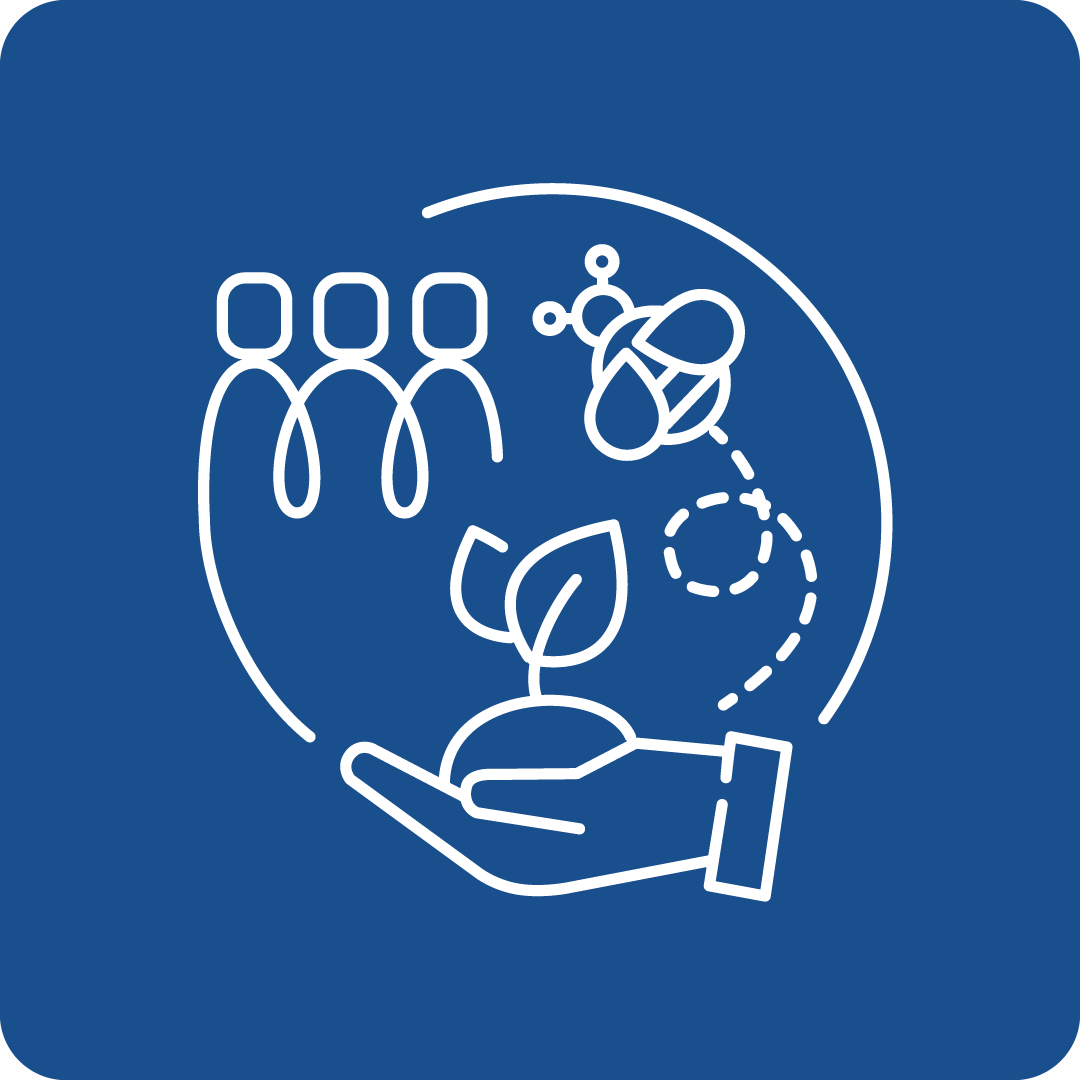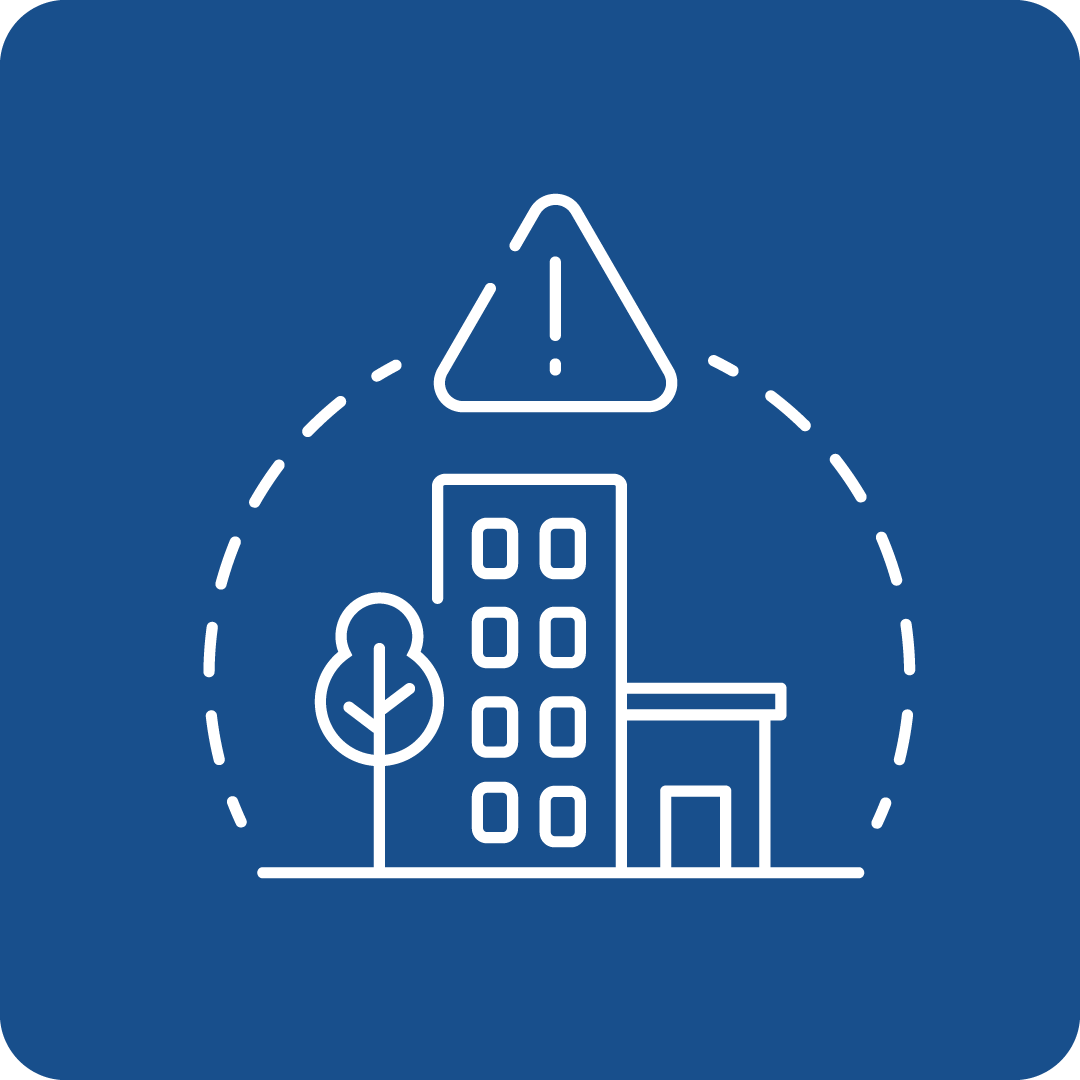Filter Search for grants
Call Navigation
Deadline expired
The deadline for this call has expired.
Call key data
Demonstrating the potential of Nature-based Solutions and the New European Bauhaus to contribute to sustainable, inclusive and resilient living spaces and communities
Funding Program
Horizon Europe: Cluster 6 - Food, Bioeconomy, Natural Resources, Agriculture and Environment
Call number
HORIZON-CL6-2024-BIODIV-02-2-two-stage
deadlines
Opening
17.10.2023
Deadline
22.02.2024 17:00
Funding rate
70% (NPO:100%)
Call budget
€ 10,000,000.00
Estimated EU contribution per project
€ 5,000,000.00
Link to the call
Link to the submission
Call content
short description
The overall aim of this topic and associated R&I activities is to leverage the New European Bauhaus (NEB) core values of sustainability, inclusion and aesthetics in Nature-based Solutions (NBS), in light of a wider transformation to enable a more sustainable, inclusive and resilient society.
Call objectives
NBS can be an integral part of our living spaces that contribute to our well-being, promote togetherness and connect to our cultural heritage. There is growing evidence that NBS are a valuable entry for transforming behaviour towards sustainability, while contributing with multiple benefits that help communities address different societal challenges – from microclimate regulation to climate change, water management, green job creation, tourism opportunities, urban regeneration, health and well-being.
The NEB aims to make the European Green Deal a positive and tangible experience for citizens, connecting it to our daily lives and living spaces. It is a bridge between the world of science and technology, art and culture and is about leveraging our green and digital challenges to transform our lives and society. By integrating the values of sustainability, inclusion and aesthetics/quality of experience, the NEB supports the development of holistic solutions to global challenges through a place-based, participatory, and transdisciplinary approach.
The systemic integration of social, cultural, digital and nature-based innovation in the design, development and governance of public space has a tremendous potential to transform these spaces into diverse, accessible, safe, inclusive and high-quality areas that increase well-being and health and deliver a fair and equitable distribution of the associated benefits.
It becomes important to analyse the potential of NBS in view of the NEB initiative and conceptualise and demonstrate how to link these two approaches, avoid trade-offs, and enhance synergies and complementarities, through local demonstration. In this regard, proposals should focus on the first transformation of the NEB (places), while also integrating, when possible, the other two transformations (ecosystem of innovation; diffusion of new meanings) in the process.
The successful proposals should:
- Deliver visionary and integrated solutions combining nature-based innovation and social, cultural, or digital solutions, with the NEB approach, in order to increase sustainability and resilience of communities and citizens' well-being. These solutions should address environmental, social, cultural, economic determinants of resilience and well-being and support communities in reducing their exposure to climate-related risks, pollution (including noise) and social tensions.
- Demonstrate how the integration of NBS and NEB in solutions for innovative land-use management, urban design and planning could enhance ecosystem services, foster equitable access to public spaces, enhance their quality and use, or promote sustainable mobility.
- Considering the existing NBS portfolio, further demonstrate NBS, enriched with the new elements brought by the NEB (e.g., aesthetics, quality of experience), as well as with concerns on the circularity, ecodesign, origin and sustainability of materials used. These solutions should be applied in innovative configurations, e.g., in protected areas, eco-tourism sites, transport infrastructure, educational and cultural buildings, etc, notably contributing to urban regeneration, tourism opportunities, green job creation, social inclusion, or health and well-being.
- Considering that NBS inherently should always enhance biodiversity, explore the connections and possible trade-offs (and propose ways to overcome them) between biodiversity targets in NBS and the NEB, including in what concerns functionality and aesthetics/quality of experience.
- Propose solutions that involve innovative ways to make NBS compatible with built cultural heritage (e.g., cultural landscapes), and explore the possible role of NBS in increasing built cultural heritage’s resilience to climate change and natural disasters.
- Propose and test guidelines and innovative tools for the implementation, maintenance, monitoring and evaluation of NBS integrating the NEB approach (e.g., addressing issues of design/ergonomics or quality of experience), as well as the necessary business and governance models for their implementation and upscaling (e.g. local incentives for NBS in public and private spaces; exploring different forms of engagement, inclusion and stewardship, etc).
- Building on the approach of the NEB, develop place based NBS with strong citizen engagement (e.g., youth, elder, vulnerable communities), through social innovation, and the necessary tools for citizen participation and the co-creation of solutions.
- Incorporate outreach, dissemination and cooperation activities with local communities, industry, educational institutions, research centres, professional organisations or museums and other cultural organisations, supporting challenge-based and experiential NBS with real-life NEB applications, promoting public debate and a change of behaviour.
- Engage, through sustainable transdisciplinary collaborations, communities of practice that very rarely work together (e.g., architects, landscape architects, designers, artists, ecologists, spatial planners, psychologists, economists, or engineers), bridging epistemological gaps, while also contributing to the breaking up of silos in local/regional administrations.
- Explore the role of NBS and NEB in transformative change to provide holistic solutions to address global challenges (climate, biodiversity, water, economic, demographic, etc), including through transformative and contemporary arts.
Proposals should address all of the above points.
For wider impact, proposals should ensure a diversity of demonstration contexts (e.g., urban, rural, protected areas) and geographical representation, as well as the inclusion of a diversity of actors for local demonstration: local and/or regional authorities, business, academia, and civil society.
Other than the critical role of ecological sciences, this topic requires the effective contribution of SSH disciplines and the involvement of SSH experts, institutions as well as the inclusion of relevant SSH expertise, in order to produce meaningful and significant effects enhancing the societal impact of the related research activities. The involvement of disciplines such as psychology, behavioural science, economics, geography, anthropology, sociology, architecture, arts, cultural heritage, or design studies, is considered essential to the diffusion of new meanings, enhance social learning and promote the role of social and cultural innovation in transforming public spaces, with particular attention to inclusion, quality of experience and cultural perceptions of nature.
Social innovation is recommended when the solution is at the socio-technical interface and requires social change, new social practices, social ownership, or market uptake.
Because of the substantial investments that might be necessary for implementing the NBS, additional or follow-up funding (private or public) should be sought, including from relevant regional/national schemes under the Recovery and Resilience Fund, the European Structural and Investment Funds (ESIF), or other relevant funds.
Projects should envisage clustering activities with the projects of the same topic and with the Horizon 2020 NBS project portfolio and respective task forces and notably coordinate with Horizon Europe projects resulting from: HORIZON-CL6-2022-COMMUNITIES-01-05: Assessing the socio-politics of nature-based solutions for more inclusive and resilient communities; HORIZON-CL6-2022-COMMUNITIES-02-02-two-stage: Developing nature-based therapy for health and well-being; HORIZON-CL6-2022-BIODIV-01-03: Network for nature: multi-stakeholder dialogue platform to promote nature-based solutions; and HORIZON-CL6-2023-BIODIV-01-8: Addressing biodiversity decline and promoting Nature-based Solutions in higher education. Collaboration with the European Biodiversity Partnership (Biodiversa+) should also be explored. To this end, proposals should foresee dedicated tasks and appropriate resources for coordination measures, foresee joint activities and joint deliverables.
Proposals should build on existing outcomes of the Horizon 2020 and Horizon Europe NBS project portfolio and other NEB related projects funded in Horizon Europe and ensure the proposed activities are complementary. Complementarity should also be sought with Horizon Europe Missions, notably “100 Climate-Neutral and Smart Cities by 2030”, “Restore our Ocean and Waters by 2030” and “Adaptation to Climate Change”.
Projects are expected to contribute to the NEB initiative by interacting with the NEB Community, NEBLab and other relevant actions of the NEB initiative through sharing information, best practice, and, where relevant, results.
Proposals should ensure that all evidence, information, and project outputs will be accessible through the Oppla portal (the EU repository for Nature-based solutions).
In the context of this topic, geographical areas of the European Union and Associated Countries are NUTS level 1 regions of European Union Member States and of Associated Countries for which they are defined. In the case of Associated Countries without NUTS classification, the country as a whole is to be considered as one geographical area:
- List of Associated Countries not defined by NUTS level 1: Armenia; Bosnia and Herzegovina; Faroe Islands; Georgia; Kosovo; Israel; Moldova; Tunisia; Ukraine.
- List of countries not defined by NUTS level 1 with which association negotiations are being processed or where association is imminent: Morocco.
read more
Expected results
In line with the European Green Deal priorities and the EU climate adaptation strategy, as well as the EU's climate ambition for 2030 and 2050 and the EU biodiversity strategy for 2030, the successful proposals will support the development of Nature-based Solutions (NBS) contributing to the resilience and the sustainable, balanced and inclusive development of urban, peri-urban and rural areas.
Project results are expected to contribute to all of following expected outcomes:
- A transdisciplinary integration of NBS and the NEB is demonstrated in different contexts, contributing to the transformative change needed to tackle the climate and biodiversity crises, and drawing on inclusiveness and the pluralities of values, knowledge, cultural diversity and cultural heritage.
- High quality, multifunctional, co-created public spaces that enhance sustainability, resilience and the well-being of communities, through the combination of NBS and the NEB, with digital, social and cultural innovation.
- Greater understanding of the links between NBS and the NEB and how to better make these two approaches compatible and integrated in places and buildings, landscapes, industrial systems, policies and communities.
- Communities benefit from the implementation of a new societal vision encompassing sustainability, resilience, health, well-being and inclusion, based on the demonstration of the combination of the NEB with NBS.
read more
Eligibility Criteria
Regions / countries for funding
Moldova (Moldova), Albania (Shqipëria), Armenia (Հայաստան), Azerbaijan (Azərbaycan), Belarus (Беларусь), Bosnia and Herzegovina (Bosna i Hercegovina / Босна и Херцеговина), Faeroes (Føroyar / Færøerne), Georgia (საქართველო), Iceland (Ísland), Israel (ישראל / إِسْرَائِيل), Kosovo (Kosova/Kosovë / Косово), Montenegro (Црна Гора), Morocco (المغرب), New Zealand (Aotearoa), North Macedonia (Северна Македонија), Norway (Norge), Serbia (Srbija/Сpбија), Tunisia (تونس /Tūnis), Türkiye, Ukraine (Україна), United Kingdom
eligible entities
Education and training institution, International organization, Non-Profit Organisation (NPO) / Non-Governmental Organisation (NGO), Other, Private institution, incl. private company (private for profit), Public Body (national, regional and local; incl. EGTCs), Research Institution incl. University, Small and medium-sized enterprise (SME)
Mandatory partnership
Yes
Project Partnership
To be eligible for funding, applicants must be established in one of the following countries:
- the Member States of the European Union, including their outermost regions
- the Overseas Countries and Territories (OCTs) linked to the Member States
- third countries associated to Horizon Europe - see list of particpating countries
Only legal entities forming a consortium are eligible to participate in actions provided that the consortium includes, as beneficiaries, three legal entities independent from each other and each established in a different country as follows:
- at least one independent legal entity established in a Member State; and
- at least two other independent legal entities, each established in different Member States or Associated Countries.
Any legal entity, regardless of its place of establishment, including legal entities from non-associated third countries or international organisations (including international European research organisations) is eligible to participate (whether it is eligible for funding or not), provided that the conditions laid down in the Horizon Europe Regulation have been met, along with any other conditions laid down in the specific call topic.
A ‘legal entity’ means any natural or legal person created and recognised as such under national law, EU law or international law, which has legal personality and which may, acting in its own name, exercise rights and be subject to obligations, or an entity without legal personality.
Specific cases:
- Affiliated entities — Affiliated entities (i.e. entities with a legal or capital link to a beneficiary which participate in the action with similar rights and obligations to the beneficiaries, but which do not sign the grant agreement and therefore do not become beneficiaries themselves) are allowed, if they are eligible for participation and funding.
- Associated partners — Associated partners (i.e. entities which participate in the action without signing the grant agreement, and without the right to charge costs or claim contributions) are allowed, subject to any conditions regarding associated partners set out in the specific call conditions.
- Entities without legal personality — Entities which do not have legal personality under their national law may exceptionally participate, provided that their representatives have the capacity to undertake legal obligations on their behalf, and offer guarantees to protect the EU’s financial interests equivalent to those offered by legal persons.
- EU bodies — Legal entities created under EU law including decentralised agencies may be part of the consortium, unless provided for otherwise in their basic act.
- Joint Research Centre (‘JRC’)— Where provided for in the specific call conditions, applicants may include in their proposals the possible contribution of the JRC but the JRC will not participate in the preparation and submission of the proposal. Applicants will indicate the contribution that the JRC could bring to the project based on the scope of the topic text. After the evaluation process, the JRC and the consortium selected for funding may come to an agreement on the specific terms of the participation of the JRC. If an agreement is found, the JRC may accede to the grant agreement as beneficiary requesting zero funding or participate as an associated partner, and would accede to the consortium as a member.
- Associations and interest groupings — Entities composed of members (e.g. European research infrastructure consortia (ERICs)) may participate as ‘sole beneficiaries’ or ‘beneficiaries without legal personality’. However, if the action is in practice implemented by the individual members, those members should also participate (either as beneficiaries or as affiliated entities, otherwise their costs will NOT be eligible.
other eligibility criteria
To ensure a balanced portfolio covering demonstration activities in diverse geographical areas of the European Union and Associated Countries, grants will be awarded first to the highest ranked application according to the standard procedure described in Horizon Europe General Annexes D and F, followed by other applications that are the highest ranked among those that ensure the most complementary geographical coverage, provided that the applications attain all thresholds. When assessing geographical coverage, the evaluation will take into account the location of the application's demonstration activities, not the location of the application's participants/beneficiaries.
Additional information
Topics
Relevance for EU Macro-Region
EUSAIR - EU Strategy for the Adriatic and Ionian Region, EUSALP - EU Strategy for the Alpine Space, EUSBSR - EU Strategy for the Baltic Sea Region, EUSDR - EU Strategy for the Danube Region
UN Sustainable Development Goals (UN-SDGs)
![]()
![]()
![]()
Additional Information
All proposals must be submitted electronically via the Funders & Tenders Portal electronic submission system (accessible via the topic page in the Search Funding & Tenders section). Paper submissions are NOT possible.
Proposals must be complete and contain all parts and mandatory annexes and supporting documents, e.g. plan for the exploitation and dissemination of the results including communication activities, etc.
The application form will have two parts:
- Part A (to be filled in directly online) contains administrative information about the applicant organisations (future coordinator and beneficiaries and affiliated entities), the summarised budget for the proposal and call-specific questions;
- Part B (to be downloaded from the Portal submission system, completed and then assembled and re-uploaded as a PDF in the system) contains the technical description of the project.
Annexes and supporting documents will be directly available in the submission system and must be uploaded as PDF files (or other formats allowed by the system).
This call follows a two-stage approach.
This topic is part of the blind evaluation pilot under which first stage proposals will be evaluated blindly. Applicants submitting a proposal under the blind evaluation pilot (see General Annex F) must not disclose their organisation names, acronyms, logos, nor names of personnel in Part B of their first stage application (see General Annex E).
The limit for a first-stage application is 10 pages. The limit for a full application (Part B) is 45 pages.
Contact
To see more information about this call, you can register for free here
or log in with an existing account.
Log in
Register now



